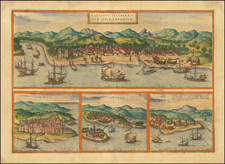Scarce map of the southern part of India, published by D'Anville and engraved by Delahaye.
This is one of the earliest maps to accurately detail the interior of Southern India, depicting the subcontinent below the 16th degree of latitude. Features include the great Indian states of the Nawabs of the Carnatic, Mysore, Madura, Tanjore, Cannara, Marava and Travancore. A legend at bottom left identifies "important locations," the residences of princes and governors, churches and temples.
Jean-Baptiste Bourguignon D'Anville (1697-1782) based his map on the surveys of the Jesuit cartographer Jean-Venant Bouchet (1655-1732). Bouchet had first travelled to Asia with the French embassy to Siam in 1688 but the deteriorating political situation soon forced him to leave for India. Over the next 30 years, Bouchet walked the countryside of Southern India, making careful surveys. In 1719, he dispatched his manuscript maps to France, which were recognized as revolutionary, as they contained the first accurate depiction of the interior of Southern India, especially the Deccan Plateau, within the mountains of the Eastern and Western Ghats.
In honor of its Jesuit sources, the map is adorned with the Jesuit symbol, included in the cartouche.
Jean-Baptiste Bourguignon d’Anville (1697-1782) was one of the foremost French geographers of the eighteenth century. He carried out rigorous research in order to create his maps, which greatly developed the technical proficiency of mapmaking during his lifetime. His style was also simpler and less ornate than that of many of his predecessors. It was widely adopted by his contemporaries and successors.
The son of a tailor, d’Anville showed cartographic prowess from a young age; his first map, of Ancient Greece, was published when he was only fifteen years old. By twenty-two, he was appointed as one of the King’s géographes ordinaire de roi. He tutored the young Louis XV while in the service to the Crown. However, royal appointment did not pay all the bills, so d’Anville also did some work for the Portuguese Crown from 1724. For example, he helped to fill out Dom João V’s library with geographical works and made maps showing Portugal’s African colonies.
D’Anville disapproved of merely copying features from other maps, preferring instead to return to the texts upon which those maps were based to make his own depictions. This led him to embrace blank spaces for unknown areas and to reject names which were not supported by other sources. He also amassed a large personal map library and created a network of sources that included Jesuits in China and savants in Brazil. D’Anville’s historical approach to cartography resulted in magnificently detailed, yet modern and academic, maps. For example, his 1743 map of Italy improved upon all previous maps and included a memoir laying out his research and innovations. The geographer also specialized in ancient historical geography.
In 1773, d’Anville was named premier géographe de roi. In 1780, he ceded his considerable library to the Ministry of Foreign Affairs to be used for as a reference library for diplomats. D’Anville is best known for several maps, including his map of China, first published in 1735, and then included with Du Halde’s history of that country (the Hague, 1737). His map of Africa (1749) was used well into the nineteenth century.









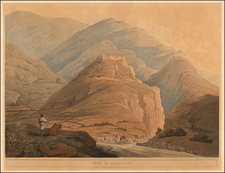
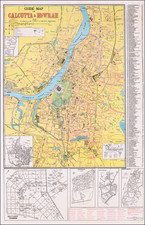
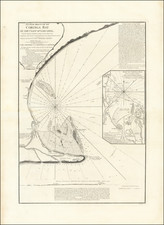
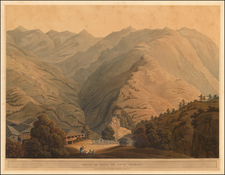
![[India] Tab. X. Asiae Complectens India intra Gangem](https://storage.googleapis.com/raremaps/img/small/78289.jpg)
